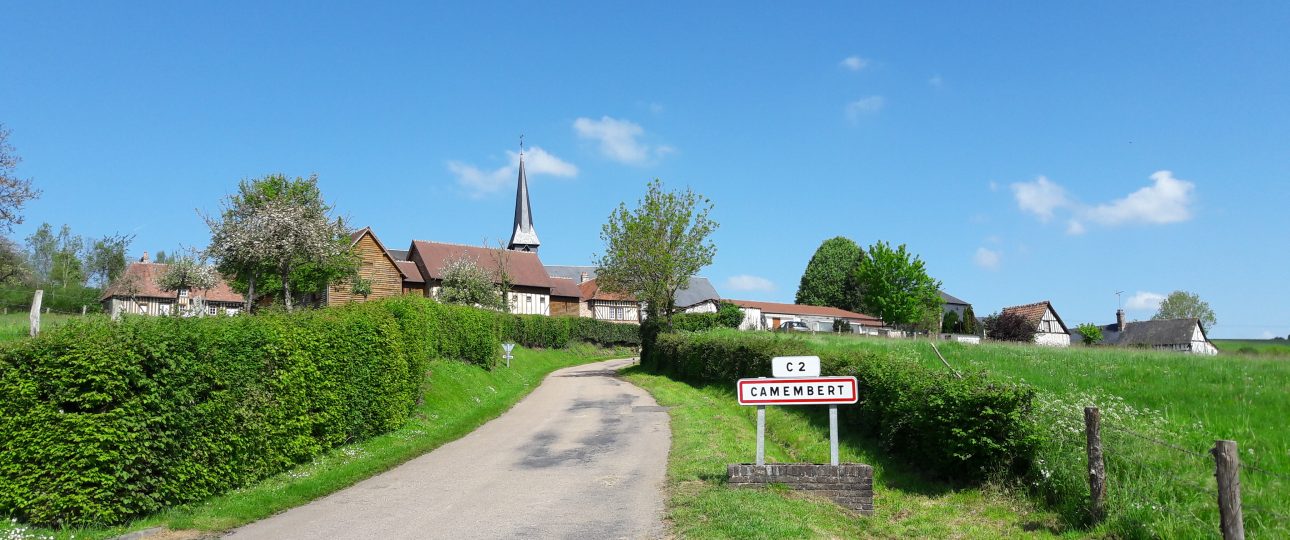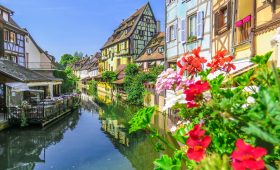Exploring Camembert: A Cheese Lover’s Delight
In the charming Normandy region of France lies the village of Camembert, a place intimately connected with the history of one of the world’s most celebrated cheeses: Camembert cheese. For travelers eager to delve into France’s culinary heritage, Camembert offers a rich tapestry of history, culture, and gastronomy that promises to enchant any visitor.
The Legacy of Camembert Cheese
The village of Camembert is synonymous with its creamy, rich cheese, first crafted in 1791 by Marie Harel, a farmer from Normandy. Guided by Abbot Charles-Jean Bonvoust, she refined a local cheese recipe, creating a delicacy that quickly gained fame. Today, Camembert cheese stands as a symbol of French culinary artistry.
The Craft of Camembert Cheese
Visitors to Camembert can observe the traditional cheese-making process, which involves:
- Using unpasteurized cow’s milk, particularly for the AOC “Camembert de Normandie” variety.
- Inoculating the milk with mesophilic bacteria, adding rennet, and allowing it to coagulate.
- Cutting the curd into cubes, salting, and transferring it to cylindrical molds.
- Turning the molds regularly to drain whey and spraying the surface with Penicillium camemberti for ripening.
- Aging the cheese for a minimum of three weeks to develop its distinctive flavor and texture.
Optimal Time to Visit Camembert
The best time to explore Camembert is between May and October, when the weather is mild and ideal for outdoor activities. This period also coincides with the cheese production season, offering visitors the chance to taste the freshest Camembert cheese.
Reaching Camembert
Camembert is located about 250 kilometers west of Paris, making it accessible for travelers.
By Train
Travelers can take a train from Paris to Lisieux, the nearest major town. From Lisieux:
- Take a local bus or taxi to Camembert, approximately 16 kilometers away.
By Car
Driving is another option. Rent a car in Paris and take the A13 highway towards Caen, following signs to Camembert. The journey offers scenic views of the Normandy countryside.
Getting Around Camembert
Camembert is small enough to explore on foot, but for those wishing to venture further, consider these options:
- Bicycles: Rent a bike from local shops to explore the beautiful countryside.
- Car rentals: Convenient for visiting nearby attractions like Rouen or coastal towns.
- Walking tours: Join guided tours to learn about the area’s history and cheese-making heritage.
Attractions in Camembert
Though small, Camembert offers attractions that highlight its rich heritage and cheese-making tradition.
Camembert Cheese Museum
The Camembert Cheese Museum is a highlight for visitors. It provides insights into the history of cheese production, offers tastings, and hosts workshops where you can make your own cheese.
The Church of Saint-Étienne
This 13th-century church is a testament to the village’s historical significance. Its Gothic architecture offers a serene spot for reflection.
The Surrounding Countryside
Camembert is surrounded by rolling hills and lush pastures, perfect for hiking and nature walks. Many local farms welcome visitors for tours and tastings.
Culinary Experiences Beyond Cheese
While Camembert cheese is the star, the region also offers a variety of local dishes reflecting Normandy’s culinary traditions. Be sure to try:
- Norman Cider: A sparkling beverage made from local apples, perfect with cheese.
- Teurgoule: A cinnamon and vanilla-flavored rice pudding, a popular Normandy dessert.
- Seafood: Fresh oysters and mussels are abundant due to the proximity to the coast.
Festivals and Events
Camembert hosts various events celebrating its cheese-making tradition. The annual Camembert Festival in autumn features tastings, live music, and artisan markets, drawing cheese enthusiasts from around the world.
Practical Travel Tips
Enhance your visit to Camembert with these practical tips:
- Language: While many locals speak some English, learning basic French phrases can enrich your experience.
- Currency: France uses the Euro (€). Carry some cash, as smaller shops may not accept cards.
- Souvenirs: Consider buying locally made cheese and cider as a delicious reminder of your trip.
As you plan your journey, let the allure of Camembert draw you into its rich history and delectable cheese. Whether you’re a culinary enthusiast or seeking a peaceful retreat, Camembert offers an unforgettable experience.




